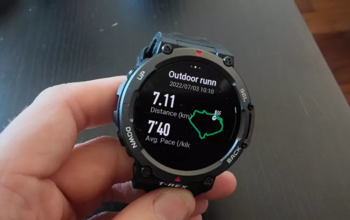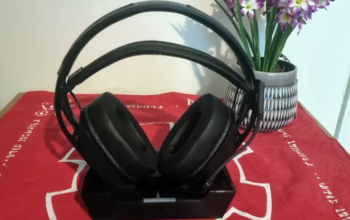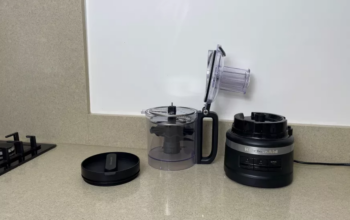QLED vs. OLED are two panel and lighting combinations for contemporary TV screens that triumph over the competition. While the latter has been a notable display type for LG, one of the go-to producers of OLED panels for several manufacturers. Including Sony, Philips, and Panasonic, the former promotes by companies like Samsung, Hisense, and TCL. Is there a better option between the two technologies in terms of how your TV get light . How nice its colors and contrast are, and what you can anticipate to pay?
The origins of these competing display technologies, how they differ from one another, and what each one excels at will all cover in this in-depth overview. QLED vs. OLED (and not so well). We’ll also say which one we believe will make the majority of people the happiest. Spoiler alert: it’s OLED TV, but there are a few things you have to keep in mind.
Once you’ve decided which TV technology is ideal for you. Check out some of the top QLED TV discounts and top OLED sales now.
What is QLED?

Quantum Light-Emitting Diode is known as QLED. That means a QLED TV is similar to a standard LED TV. Except that it uses small nanoparticles known as quantum dots to boost its brightness and color. The technology was first presented by Sony in 2013. But soon after that, Samsung started selling its QLED TVs and formed a licensing agreement with other producers. As a result, QLED TVs are now available from Vizio, Hisense, TCL, and numerous other small brands in addition to Samsung.
How do quantum dots function? To learn more about the technology, read our in-depth analysis.
Despite the coolness of quantum dots, a QLED TV nevertheless generates light in a manner similar to that of a standard LED TV. By using a backlight that is behind a conventional LCD panel. And is compose of hundreds (or in some cases, thousands) of LEDs. The names LED and QLED derive from these LEDs.
What is QLED? cont’d
Curiously, it was this use of the marketing term “QLED” in 2019 that sparked a conflict between LG and Samsung. LG alleged in a complaint to South Korea’s Fair Trade Commission (FTC). That Samsung’s allegedly QLED TVs aren’t even genuine QLED TVs. This is because, in contrast to Samsung, LG claims that a true QLED TV will use quantum-dot LEDs that produce their own light. Opposed to the latter’s usage of a quantum-dot film over an LED backlight.
In retaliation, Samsung informed the FTC that it disapproved of all the commercials LG had been airing that targeted Samsung’s QLED TVs.
In the end, the FTC sided with Samsung. But with a condition: going forward, Samsung must make it explicit in its marketing that their QLED TVs have a backlight. Details, please.
The color filters work in tandem with the LCD panel. Which is really make up of millions of tiny shutters that open and close too quickly to be seen. To produce the image you see by allowing the proper amount of light and color to escape and reach your eyes. Although it is a sophisticated technology. It occasionally fails to produce correct on-screen blacks. Since it depends on a combination of dimming the LED backlights and employing the shutters to block the remaining light. More about this will cover below.
What is OLED?

Organic Light-Emitting Diode is the official name. Unexpectedly, the name’s “Light Emitting-Diode” component has nothing to do with an LED backlight. It actually refers to the fact that every single pixel in an OLED display is also a teeny, tiny LED light. Albeit a very thin one that can create both light and color in a single element. In other words, since each OLED pixel generates its own light, OLED TVs do not require a backlight. You can refer to these kind of presentations as emissive or self-emissive in order to impress your peers.
There are a number of benefits to this design. But most people would say that the outstanding black level that is possible with OLED TVs is the largest benefit. An OLED TV simply turns off the pixel. Unlike a QLED or LED TV that must reduce its backlight and block what is there for gloomy scenarios. When a pixel is off, it doesn’t produce any light or color. Thus the area is as dark as when the TV is off.
OLED TV panels are only produce by LG Display. It sells such panels to LG Electronics, a sister business,. Who utilizes them to create some of the best TVs available today. You will also find OLED televisions from Sony, Vizio, Philips, and Panasonic. Because LG Display also supplies OLED panels to these businesses. The image processing done by Sony, LG, and others is proprietary. So even while the panels themselves are largely equal, you’ll still notice variations in picture quality among OLED TVs.
What is Mini-LED?
You may come across various brands promoting Mini-LED technology while you research your new TV alternatives. Although it may appear to be a rival to QLED and OLED. It is really an upgrade to the LED backlighting used in QLED and LED TVs.
Comparatively speaking to standard LEDs, mini-LEDs are small. As a result, a QLED TV that previously could only fit a few hundred LEDs can now hold tens of thousands of Mini-LEDs. The outcome? More backlighting control than ever before. Resulting in the closest black levels to OLED that any non-OLED display has ever attained.
The 8-Series, the first QLED TVs with a Mini-LED backlighting system, went on sale towards the end of 2019.
Mini-LED is now widely use for 2022. Along with TCL, other manufacturers of Mini-LED TVs include Samsung (under the “Neo QLED” name), LG (under the “QNED” moniker), and Sony. Which asserts that its Mini-LED TVs are better to all others due to its proprietary backlight control technology.
QLED versus OLED: Which technology is better?
Now that you are aware of what each of those letters means in terms of display technology. Let’s compare QLED vs OLED in the areas that are most crucial when choosing a TV: When spending a lot of money on a new TV, brightness, contrast, viewing angles, and other key performance variables like response speed and longevity are all crucial elements to consider.
Black levels and contrast
The distinction between a scene’s darkest and brightest areas is call as contrast. To obtain good levels of contrast. TV doesn’t need to make the brilliant areas too bright if it can give a genuinely black dark area. Because of its capacity to become entirely black when necessary. OLED reigns as the clear champion when it comes to black levels.

Contrarily (oops), QLED TVs are compel to decrease their LED backlights and block the remaining light, which is incredibly challenging to achieve flawlessly. As the light leaks onto the portion of the screen that suppose to be black, it might cause phenomenon known as “light bleed.”
But can you see it? Definitely. If you’re viewing a movie with a wider aspect ratio than 16:9 and two characters are sprinting through a parking lot at night, for instance, you can detect a small glow on sections of the picture that suppose to be completely dark or in the letterbox bars at the top and bottom of the screen.
Mini-LED backlights are one strategy used by QLED TV manufacturers to address this issue, as we previously mentioned. Although we’re not quite ready to declare it an OLED killer, it has genuine potential.
Right now, OLED is the winner. A pixel remains completely dark if it isn’t receiving power because it can’t emit any light.
QLED vs. OLED Winner: OLED
Brightness
The brightness of QLED TVs is a significant benefit. These LED backlights may prepare exceedingly, agonizingly bright because they use independent backlights rather than relying on each pixel to produce its own light. You can have a display that is more than bright enough to view clearly in even the brightestly illuminated environments when you combine that light with a quantum dot’s capacity to maximize that light by producing brighter hues in the color spectrum without losing saturation.

On the basis of pure brightness, OLED screens are incomparable. Simply put, each individual light-emitting pixels can’t generate the same amount of light. This is not a concern in a dimly lit space. In fact, we would contend that it is preferable because OLED can produce the same contrast with less brightness, making viewing in dim light less jarring to the retina. However, QLED TVs are more noticeable in well-lit areas or where a lot of daylight enters via windows – especially if HDR material is being played in these settings.
OLED panels have improved in brightness over the years, but they still fall short of QLED TVs in brightness.
QLED vs. OLED Winner: QLED
Color space
The use of quantum dots in QLED TVs has reportedly allowed it to edge ahead in terms of color accuracy, color brightness, and color volume, according to Samsung, which asserts that a wider range of better-saturated colors at extreme brightness levels is an advantage. OLED previously blew all the competition in this category out of the water.
It’s undeniable that these quantum dot TVs produce amazing colors, but for now, we’re going to call it a draw because we haven’t seen better-saturated colors at high brightness levels actually provide a real advantage in everyday viewing settings. To deem QLED the winner, we’ll need to see some observable proof.
QLED vs. OLED Winner: Draw
Response time, input lag, and refresh rate

The amount of time it takes for a pixel to change from one state to another refers to as response time. The sharper the visual, particularly in scenes of rapid-fire action, the faster the response time. OLED TVs are orders of magnitude faster than QLED TVs, despite the fact that there may be a speed of response time beyond which the human eye cannot distinguish between differences.
When compared to OLED’s response time of roughly 0.1 milliseconds, which is typically 2 to 8 milliseconds, typical QLED response times sound very good. Yes, there is no contest.
The difference between performing an action (such pressing a button on a game controller) and seeing the outcome onscreen is “input lag”. As a result, input lag is basically primarily a problem for games; it has no discernible impact on passively watching information.
Response time, input lag, and refresh rate cont’d
Additionally, the degree of input lag you encounter has less to do with the type of display technology used than it does with how much picture processing is taking place on your TV in the background. If you disable all further video processing or only use the TV’s Game Mode, which accomplishes the same thing, both QLED and OLED TVs may achieve very low levels of input latency.
Another category that will naturally matter more to gamers than to non-gamers is refresh rate. The refresh rate is the frequency at which a television changes what displays on the screen. It is closely related to frame rate, which refers to how frequently your TV program, movie, or video game updates the TV.
You won’t experience any issues as long as these two rates are close multiples of one another, such as a frame rate of 30 frames per second and a refresh rate of twice that (60 Hz). This is hardly ever a worry because ordinary TV content, such movies and TV shows, is always transmit at constant frame rates.
Response time, input lag, and refresh rate cont’d
However, certain PC and console games will alter their frame rate from one scene to the next. TVs require a feature known as VRR, or variable refresh rate, to maintain everything looking as it should. This enables your TV to adjust its native refresh rate to keep up with these frame rate fluctuations. When utilized with the kinds of games that demand VRR, a TV that doesn’t support VRR may have some undesirable side effects, such as screen tearing.
Both OLED and QLED TVs come with VRR versions. VRR TVs are currently available from Samsung, Sony, LG, Hisense, and TCL. VRR compatibility is a crucial feature to look for if you’re a PC gamer who desires a big-screen gaming experience.
OLED dominates this category due to its unrivaled excellence in response time and refresh rate.
QLED vs. OLED Winner: OLED
Viewing angle
The ideal viewing angle for QLED panels is dead center, and as you go further side to side or up and down, the picture quality declines in brightness, color, and contrast. Despite the TV manufacturers’ best efforts to fix the problem, it is always apparent, even if the intensity varies between models.

OLED screens, in contrast, may view at extreme viewing angles (up to 84 degrees) without any luminance reduction. Anti-reflective coatings have helped some QLED TVs’ viewing angles, but OLED still has a distinct advantage. Therefore, an OLED TV is excellent for you if you like to organize family screenings of your favorite movies and want to ensure that there isn’t a terrible seat in the house.
Winner: OLED


